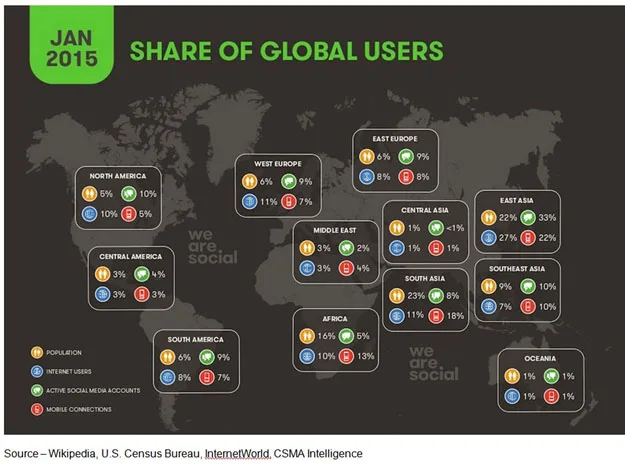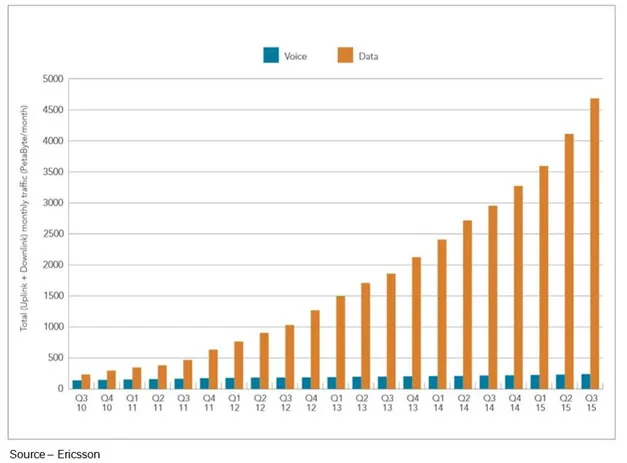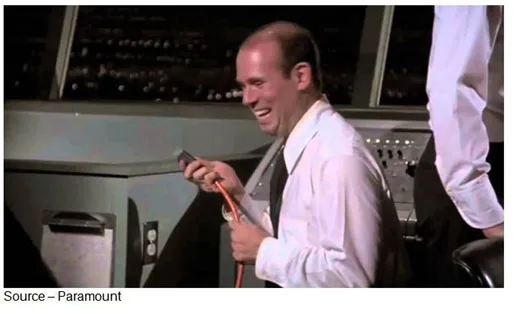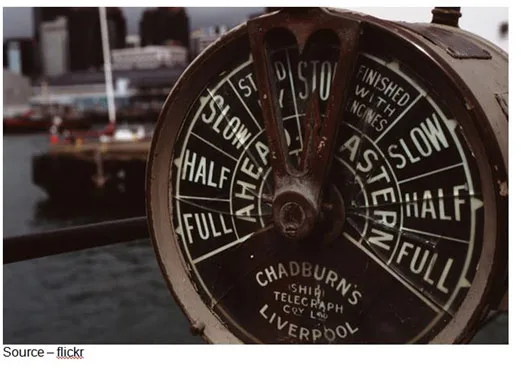The Internet is Robust but Fragile, Requiring Attention, Protection

Gunpowder, which was invented during the Tang Dynasty in the 9th century; and the Internet, originally ARPANET (U.S. Advanced Research Projects Network) which was developed in the early 1960s, may be centuries apart but they have a lot in common.
Both:
- Get your attention
- Send a clear message
- Are used for good and evil
- Can hurt people, even bring down organizations and governments
- Have people who want to “control” them
We could probably live without gunpowder but businesses, governments and life in general would grind to a painful crawl without the Internet and my kids wouldn’t have any idea what to do with their time without it.
More than 3 billion people are online. Mobile over the Internet will bring the next billion online.

Available to more than 90 percent of the global population, mobile phone service is being adopted at breakneck speed. Upgraded nets provide mobile Internet connections to computers, tablets and phones that enable us to share videos and work; connect with virtually anyone, anywhere; enhance fitness, personal safety and well, anything/everything.
In addition:
- Mobile Internet penetration will reach 71 percent by 2019
- Usage per device will triple by 2019
- 192 countries have 3G mobile nets, about 50 percent of the global population
- Smartphones are the majority of mobile handsets sold WW, tablets exceed PC sales
- More than two million apps are available and have been downloaded more than 100B times
- Voice over the Internet is flat but data transfer continues to grow exponentially

The Internet flattens organizations enabling free/fast communications up and down as well as inside and outside companies and governments.
The Internet has erased state-to-state, country-to-country borders and that has become a major issue of concern with all major governmental entities. Depending on the country’s policies and technical infrastructure there is a degree of monitoring and filtering (what you see, don’t see).
Within every country, there are private or government infrastructure providers – network pipes and ISPs (Internet service providers) that manage the traffic flow.
Vint Cerf, often called the Father of the Internet, feels the Internet isn’t a right but an enabler.
A few years ago he explained, “Allowing a handful of broadband carriers to determine what people see and do online would fundamentally undermine the features that have made the Internet such a success, and could permanently compromise the Internet as a platform for the free exchange of information, commerce, and ideas.”
When Cerf and a group of other brilliant but somewhat altruistic data scientists set the technology free for the world to share, use, those were the innocent days of the Internet. Since then, companies and countries have attempted to control, dominate the network of networks by “Balkanization” – national filters and restrictions such as nation-state networks
Of course, there’s a huge misconception of the Internet which will make such Balkanization extremely difficult.
The Internet isn’t a single entity.
It’s a network of networks – when one segment goes down another picks up the slack and a new data path is formed.
That was the original developers’ idea – protect it from almost any disaster – national or manmade!
There is no central control and no single point of failure.

That’s why loudmouthed people who say Gates should simply unplug undesirables and the problem will be solved.
As John Gilmore, one of the founders of the Electronic Frontier Foundation, said, “The Net interprets censorship as damage and routes around it.”
But there are other ways countries and malicious folks can wreak havoc, which has caused network, security and national infrastructure people to be very concerned.
Release a worm or bug (nasty program) onto the Internet and it would quickly pass from computer to computer wreaking havoc on a regional, national or global scale.
The only way to kill the worm/bug would be to bring down the network which would mean no power, water, food, you name it!
There’s another way service providers (in the U.S. and other competitive countries) like to “manage” their segments of the Internet to squeeze maximum profit from their pipes.

The marvel of the Internet is that ISPs can and do manage their segments because they don’t have all of the bandwidth we want/need for instant anywhere communications with everything – text, images, video.
And with more people on the Internet, especially in emerging and BRIC (Brazil, Russia, India, China), they’re putting a heavy load on local and international broadband service providers.
Speed in every country depends on how robust the infrastructure is. South Korea has the largest and fastest Internet speeds followed by Denmark, Iceland, England, and Sweden. Australia comes in at 13th followed by Germany and the U.S.

So if you’re a huge data user (stream a boatload of stuff to your devices), service providers have the capability of managing their “stuff.” In addition to being able to slow down and even block service, they can create fast lanes (you pay for this) and even control what you watch/access.
It’s estimated that half of Internet traffic comes from 30 providers – including Google, Facebook, and Netflix. Like Akamai, many set up CDNs (content distribution networks) and make special deals with ISPs for their connections.
Or, ISPs establish data caps and when you’ve reached that volume … BAM!
Works great … for them, but you?
As Dan Rayburn, publisher of Streaming Media, said earlier this year, “As consumers, we pay ISPs to get a certain level of connection to the Internet. We do not pay for any kind of ‘guarantee’ to be able to reach a certain website or video service, with a certain level of quality.”
I don’t like it, but it’s a fact of life!
My big concern is the true global Internet – the communications network that circles the globe.

The connections work great within countries and continents; but to get messages to go anywhere we rely on 285 submarine communications cables.
So?
Well about 99 percent of the Internet content is carried between countries through these two-inch thick lines that lay on the bottom of the ocean – about 500,000 miles if cable.
According to Cisco, global IP traffic is expected to reach 132 Exabytes per month by 2018 equal to:
- 8 billion screens streaming Brazilian Olympic Games in Ultra-HD/4K at the same time
- 5 billion people binge-watching “Game of Thrones” Season 4 video-on-demand in HD or 1.5 billion watching in Ultra-HD/4K
- 5 trillion YouTube clips
- 940 quadrillion text messages.
That’s why government and military folks around the globe were a little uneasy when Russian ships were “practicing maneuvers” early last year close to certain countries’ shores.
As you can see in looking at the map, there are certain choke or congregation points where the pipes come to the surface and converge.
And it’s true, individual and even several cables are periodically broken by accident or nature and the Internet is slowed or data is rerouted with the expected delays.
Cable owners and operators have a worldwide cable maintenance infrastructure and backup with multiple dark (idle) cables to keep businesses and people in touch with each other.
It’s almost impossible to totally severe communications; but disconnect Hong Kong and New York City and you really play hell with the global financial infrastructure.
Because of the Russian bravado, countries and regions are also planning on adding more cable repair ships, introducing more resiliency into the networks, and developing plans to speed cable repairs.
 As Matt Dillon said, “If you’re gonna use that gun, you better start on me.”
As Matt Dillon said, “If you’re gonna use that gun, you better start on me.”
Festus added, “But there ain’t no such a thing. A little’s a little, and a lot’s a lot, there ain’t no little lot, or lot of little.”
The Internet is a globally critical information infrastructure that wasn’t conceived to be managed/controlled and shouldn’t be.
Of course, that won’t stop individuals, organizations and countries from trying!
# # #